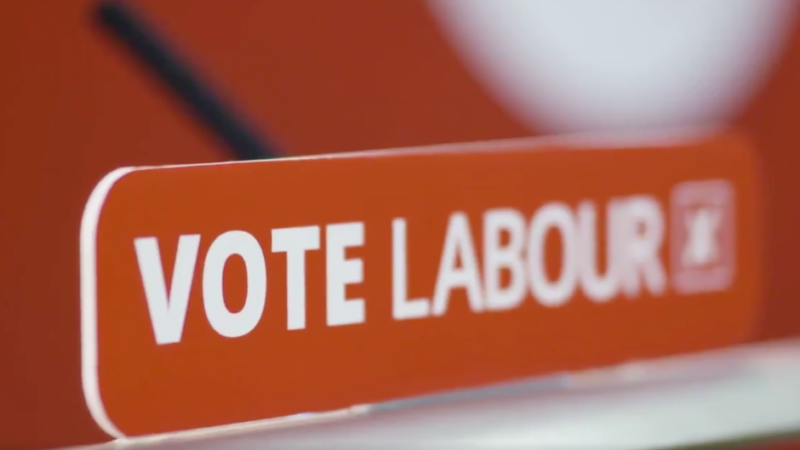
Trigger ballots: the phrase that keeps Labour MPs awake at night.
What is a “trigger ballot”? It’s probably only half understood by the average Labour Party member. The term refers to a ballot of branches and affiliates of a Constituency Labour Party (CLP) with a Labour MP who wishes to stand again at the next general election. It decides either to let the MP stand as the Labour candidate again without needing to face other challengers (sometimes described as “passing the trigger”) or to make the MP go through a full reselection process (“failing the trigger” or a selection “being triggered”). It only happens in Labour-held seats, so the whole process isn’t experienced by about 400 CLPs.
This is not a new process. There wasn’t any time to run trigger ballots in the 2015 parliament due to the snap 2017 general election, but all Labour MPs faced a trigger ballot before every general election between 1992 and 2015. The idea of a trigger ballot was actually a moderate Labour initiative brought in after two general elections ahead of which all Labour MPs faced “mandatory reselection” – a full reselection process with challengers for every MP. This followed the selection processes of 1983, in which 17 MPs were deselected, and 1987, in which seven MPs were deselected.
This period of our party’s history was mired in disunity and factional infighting. Though the numbers of MPs actually deselected over this period was relatively small, the mere threat of deselection contributed enormously to the SDP-Labour split. Labour MPs defected before the deselection process could start, leading to two of the worst election results in Labour’s history.
The introduction of trigger ballots meant that almost all Labour MPs didn’t face a full selection contest for six general elections, and in the seventh – in 2017 – they were all automatically imposed as candidates. There wasn’t time for anything else.
Mandatory reselection had been one of the key planks of the internal party reform agenda of the Bennite left in the 1970s and early 1980s, i.e. for people like Jon Lansman, Jeremy Corbyn, Diane Abbott and John McDonnell, who were young activists then. It was a central demand, alongside member involvement in picking the leader and conference determining the content of the manifesto.
This demand naturally arose again in the 2018 Democracy Review, but it didn’t get through Labour’s national executive committee (NEC), in a partial defeat for Momentum. Instead, a reformed trigger ballot process was agreed as a compromise acceptable to the unions, who wished to retain a role in the reselection process.
What has changed?
The current process is still a ballot of party branches (that hold physical meetings of members to decide which way the branch will cast its vote) and locally-affiliated union and socialist society branches (whose votes are usually cast by national or regional officials in the case of the unions). But the winning line has dramatically changed.
The old process aggregated all the votes together, so if the MP got 50% + 1 of the votes, they passed the trigger. This meant that in many CLPs, union branches could hypothetically protect an MP by outvoting the party branches. Until recently, all the major unions had a policy of voting to reselect sitting MPs other than in very exceptional circumstances, in the interests of party unity.
The new process disaggregates the votes and counts the party branches separately to the union and affiliate branches. If an MP gets “triggered” by just one third of the branches in either section, they have failed the trigger and face a full selection.
To give an example, an MP could get support from all ten party branches in their CLP, but if they have three affiliated branches – each from a different union – and one of the unions decides to trigger them, that’s a third of the affiliate section and they have lost the trigger and have to go through a full reselection process.
The rules can also be capricious.
It’s one-branch-one-vote, so a tiny branch with ten members gets the same weight as a massive one with hundreds. Patterns of union and socialist society affiliation vary wildly according to local traditions and the efforts of unions or indeed MPs to sign up lots of affiliates when this mattered more under the old system (because they could outvote party branches).
In London and big cities, there is often a fairly logical pattern of branches being coterminous with wards. In less urban areas, however, the party encouraged the abolition or merger of branches when the membership was smaller, to make more viable units. A prime example is Canterbury, which has only two branches – one small one for the town of Whitstable and one for the whole of the rest of the CLP. If the Whitstable one votes for the trigger, that’s more than one third of two branches, even though it may be less than one third of the members, and Rosie Duffield will face a full reselection.
The new system is designed to trigger more MPs and make them go through a full process. However, the political context has changed dramatically since the last round of triggers. In my second article, I will look at the politics of this upcoming round of trigger ballots.




More from LabourList
‘Welfare reforms still mean a climate of fear. Changes are too little, too late’
Welfare bill: Which MPs are still voting against reforms?
‘The tap end is getting hotter – and Welsh Labour might get burned’